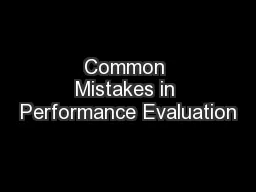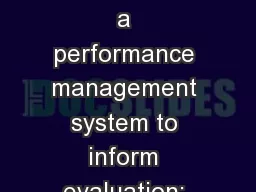PPT-Common Mistakes in Performance Evaluation
Author : tatiana-dople | Published Date : 2017-12-28
The Art of Computer Systems Performance Analysis By Raj Jain Adel Nadjaran Toosi Wise men learn by other mens mistake fools by their own H G Wells No Goals Many
Presentation Embed Code
Download Presentation
Download Presentation The PPT/PDF document "Common Mistakes in Performance Evaluatio..." is the property of its rightful owner. Permission is granted to download and print the materials on this website for personal, non-commercial use only, and to display it on your personal computer provided you do not modify the materials and that you retain all copyright notices contained in the materials. By downloading content from our website, you accept the terms of this agreement.
Common Mistakes in Performance Evaluation: Transcript
Download Rules Of Document
"Common Mistakes in Performance Evaluation"The content belongs to its owner. You may download and print it for personal use, without modification, and keep all copyright notices. By downloading, you agree to these terms.
Related Documents














